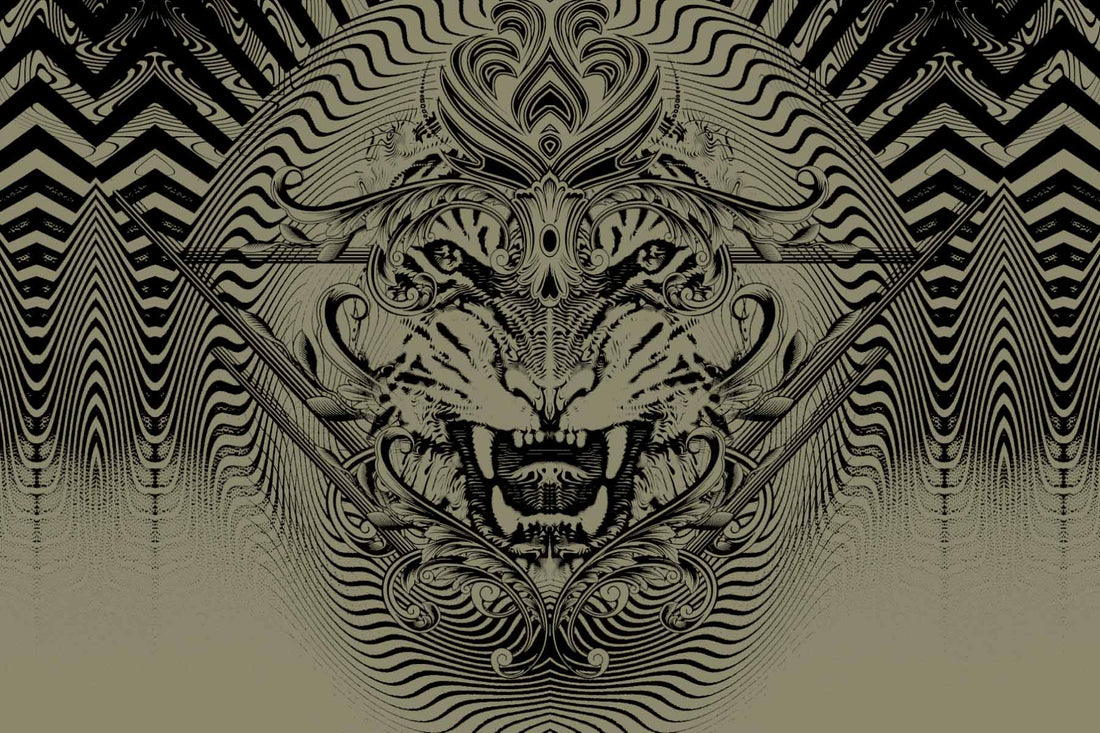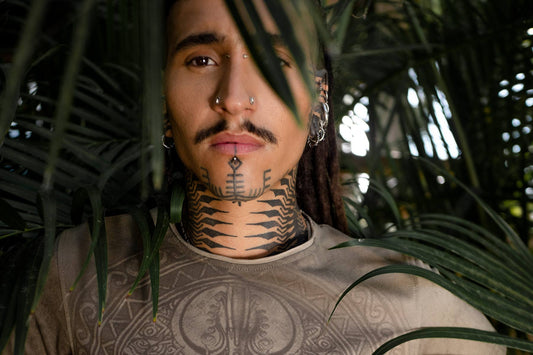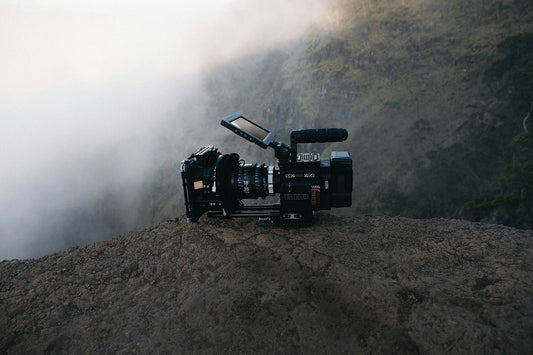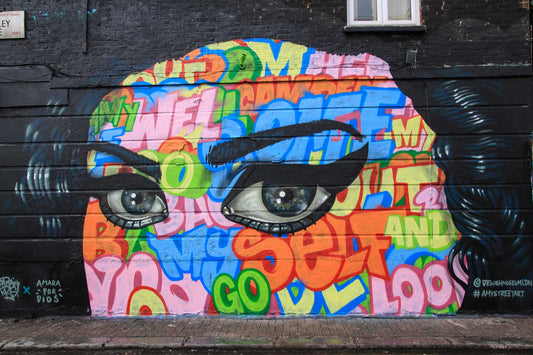Fashion, often dismissed as mere frivolity by some, has always served as a canvas for self-expression, reflecting the ever-evolving facets of our identities. If drugs have significantly influenced cultures worldwide - and indeed they have - it's only natural that this influence would extend to the realm of style, from ancient times to the present day. Embarking on a journey through psychedelia in fashion leads us to delve into ancient roots, past decade revolutions, and futuristic innovations that continue to inspire today's designers. Psychedelia in fashion transcends mere style; it's a voyage into the depths of human consciousness and imagination.
African Ancient Tribes: Pioneers of Metaphysical Journey
Imagine travelling back in time to ancient epochs when tribes gathered and donned garments adorned with intricate patterns and metaphysical symbols. Ancient tribes celebrated sacred ceremonies where attire and accessories weren't merely adornments but vehicles for communication and connection with the divine.
Central African Pygmy tribes held ceremonies involving the use of psychoactive substances, such as iboga, which facilitated access to altered states of consciousness and communication with ancestors. Their profound shamanic knowledge was later transmitted to the Bwiti tribes of Gabon. The psychedelic influences can be seen in the Bwiti body paintings of vibrant colours and patterns.

Central and South American Tribal Visionary Art
The Shipibo Conibo, an ethnicity rooted in the Ucayali region of the Peruvian Amazon rainforest, still live in symbiosis with sacred plants, particularly Ayahuasca. This deep bond is the essence of their culture, influencing every aspect of life, from healing practices to social dynamics, from craftsmanship to spirituality. And, of course, fashion. The intricate geometries of their textiles, featuring repeated crosses and octagons, are precise cosmological references. The vivid colours derived from natural pigments evoke the hallucinations induced by the many active principles contained in the sacred Ayahuasca.


Images above: Shipibo-Conibo traditional embroidering art (top/left photo by Juan Carlos Huayllapuma/CIFOR) and the “Barranco Shipibo” mural from the SÖI Collective - a Shipibo-Conibo Graphic Research and Workshop Center (bottom/right photo by Olga Osnayo Oliveros).
Peyote, a cactus containing a combination of various psychoactive principles, including mescaline, has been used for millennia by Central American tribes as a bridge to transcendence. In the clothing of some tribes, such as the Wixárika, women weave garments with patterns that evoke the visual distortions experienced when under the influence of the plant.

Image above: Huichol beadwork woman mask, Mexico.
The Psychedelic Explosion of The 1960s
No other era encapsulated the psychedelic spirit quite like the 1960s, a time characterized by unprecedented cultural ferment and the spread of ideals of peace, love, and freedom. The hippie movement burst onto the social scene, ushering in a revolution in both customs and clothing. Hippie attire wasn't merely a matter of fashion; it was a visual expression of a philosophy of life. Floral fabrics, tie-dye prints, and fringed details served as the manifesto of an era of experimentation and authenticity, reflecting the desire for freedom and connection with nature and others.


Images above: a scene from the movie Hair (top/left) and Jimi Hendrix's Axis album cover (bottom/right).
The Rave Movement: A Modern Witches' Sabbath
What about the rave movement of the 1980s and '90s and our current days music festivals? Although seemingly distant in time and space from the tribal rituals we've discussed, raves shared with them a quest for altered states of consciousness and psychedelic experiences, unabashedly reflected in their over-the-top attire. At the heart of this revolution was (and still is) electronic music, a hypnotic blend of synthetic rhythms and futuristic sounds that beckoned to dance and ecstasy. DJs became modern-day shamans, guiding the crowd on a sonic journey that defied the boundaries of perception and human experience. Strobe lights, lasers, and light displays contributed to creating a surreal atmosphere, while visual art and decoration transformed spaces into labyrinths of psychedelic images and cosmic symbols. The clothing worn during raves mirrored this psychedelic atmosphere, with vibrant colours, reflective fabrics, and luminous accessories transforming participants into creatures from another world. People dressed to express their individuality and merge with the collective energy of the crowd, creating a living kaleidoscope of styles and unique personalities.

Psychedelic culture gatherings like Boom Festival continue to influence and inspire fashion designers. Image above: Ryo wearing Psylo's festival wear at Boom, photo by Dan Thomas.
Contemporary Fusion: Future Visions and Psychedelic Elements
In today's fashion landscape, futuristic avant-garde merges with psychedelic elements, creating an intriguing synthesis of past and future worldviews. Contemporary designers explore the possibilities offered by innovative materials and new technologies to experiment with new boundaries between touch, sight, and perception.
Designer Iris Van Herpen pushes boundaries with iridescent fabrics that change colour with movement or light. Other designers incorporate geometric patterns reminiscent of LSD-induced hallucinations, sacred geometry, or prints evoking dreamlike visions. Like the streetwear collection of Symbolika, the wearable art from the Plazmalab collective, or our ongoing Psylo collaboration with artist Luke Brown.



Images above: Iris van Herpen exhibit at Paris, 2023-2024 (top/left), Plazmalab psychedelic-inspired artwork for textile printing (middle/right) and Psylo collaboration with visionary artist Luke Brown (below, and top banner).
The link between fashion and the doors of perception is a journey far from over. Fashion will continue to be a medium through which to explore and express the various nuances of consciousness. Innovation and experimentation will continue to shape our way of being, bringing us ever closer to the boundaries of our experiences.
We invite you to discover our psychedelic-inspired clothes by visiting the dedicated collection:








